This post may contain affiliate links.
Sabzi Polo is a delicious Persian herb rice that’s served with fish for Persian new year. Rice mixed with a selection of aromatic herbs makes this a great side dish to serve when you’re feeding a crowd!
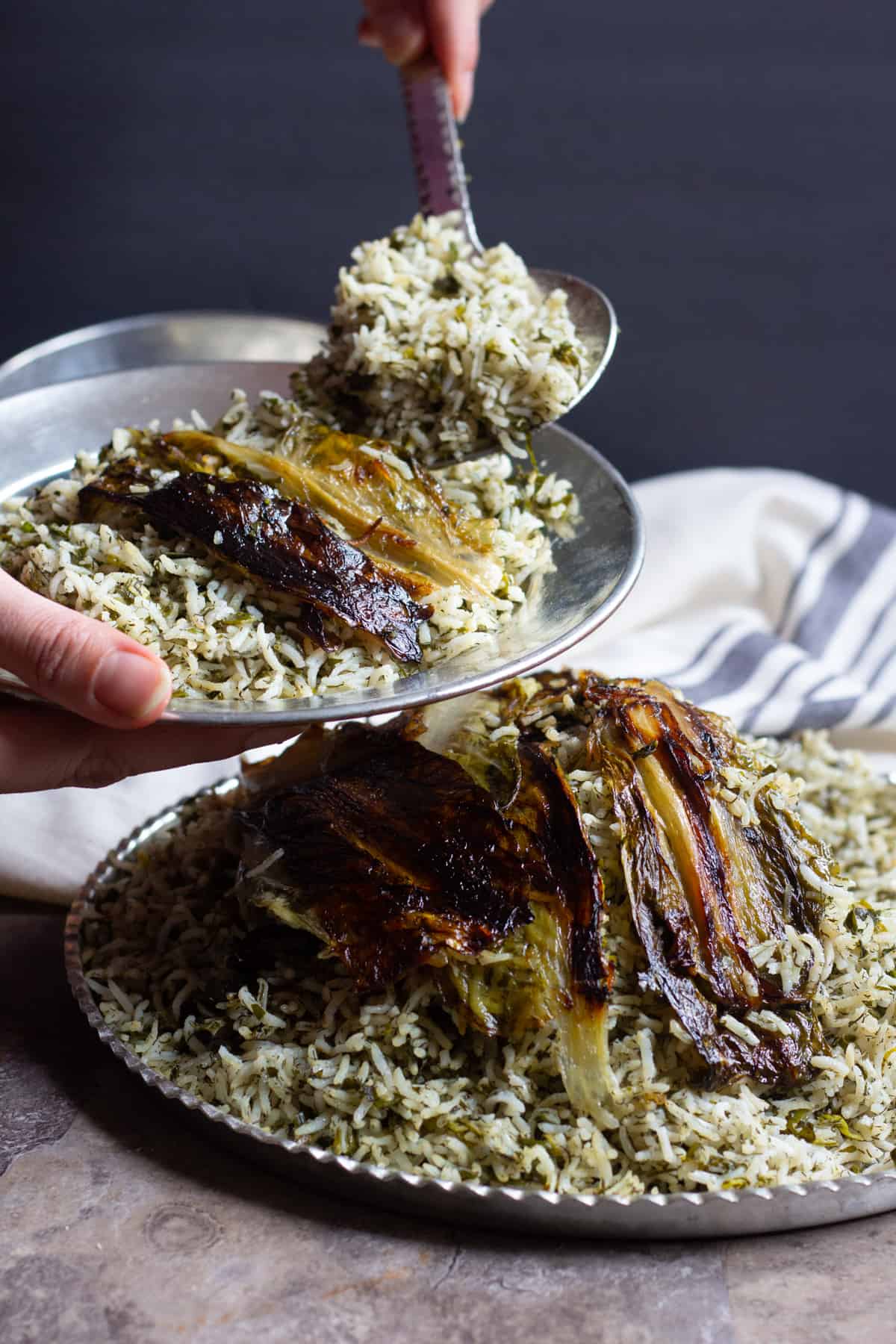
Who’s up for a rice dish that is full of herbs and bursting with flavor? And just look at that shiny lettuce tahdig!

Norooz is so close, I can feel that spring is waiting at the door. It’s such a great feeling to start the new year with spring, where everything is new. At this time of the year, we eat all the green food as they represent life and rebirth such as Kuku Sabzi and Dill Rice with Peas. We also make different types of Persian cookies and pastries like Walnut Filled Persian Pastry (Qottab) and Raisin Cookies (Shirini Keshmeshi). Everything around here smells like Nowruz these days.
Related Recipes:
Today, I’m going to show you how to make Sabzi Polo which is a delicious Persian herb rice recipe that’s made with fresh or dried herbs and usually has a crispy lettuce tahdig, which is amazing, trust me. Sabzi means “herbs” and Polo means “Rice, so Sabzi Polo means “herb rice” and it’s usually served with stuffed fish with pomegranates and walnuts which is a Persian style fish usually served around the new year. We call the full meal “Sabzi Polo Mahi” which means “Herb Rice and Fish”.
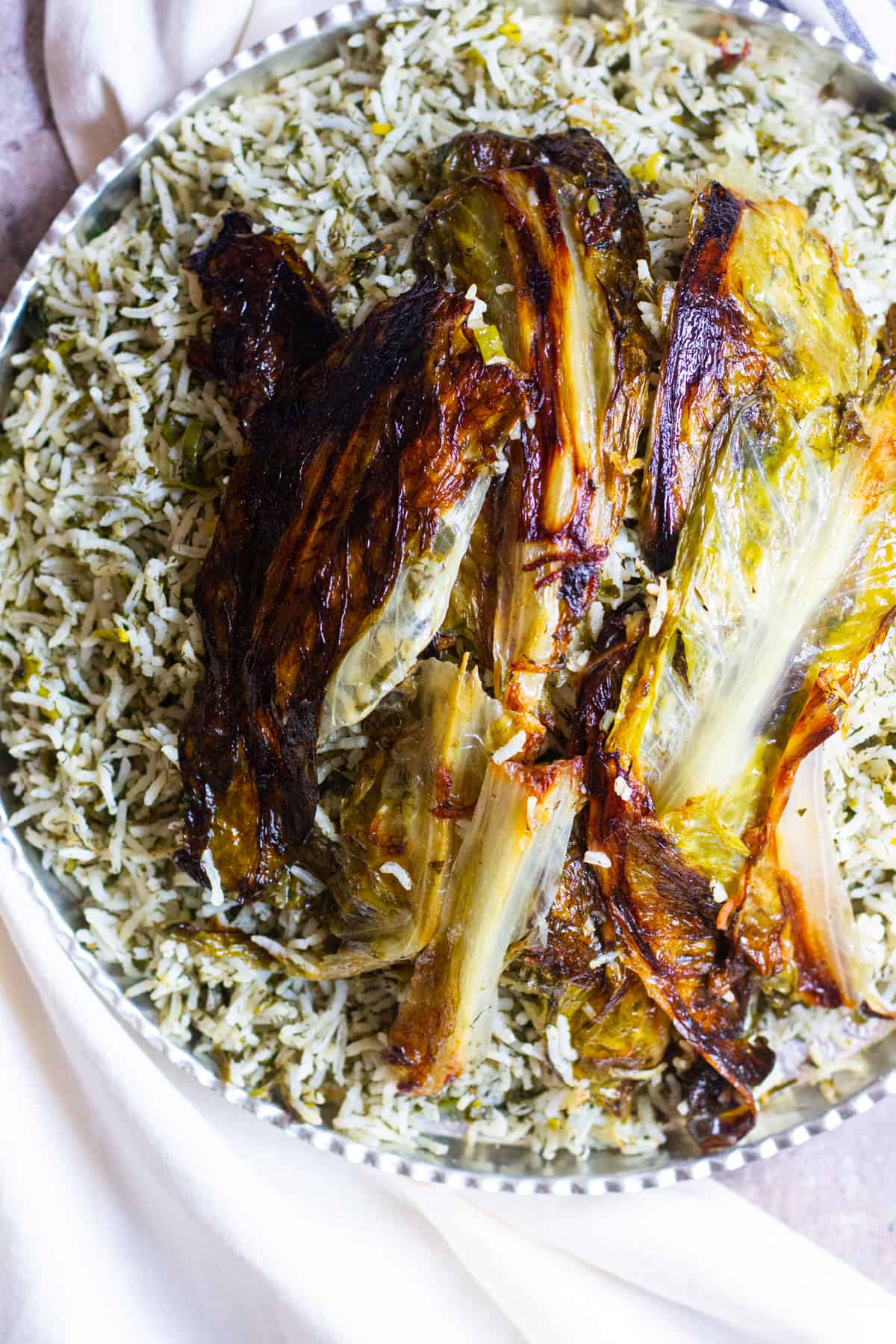
What are the herbs used in Sabzi Polo?
Sabzi polo is a mixture of rice and several different herbs. You can use either fresh or dried herbs, or even a mix of both like I did here. The herbs used in Sabzi polo are:
- Parsley
- Cilantro
- Chives or leek (the green parts)
- Dill
I always use both the leaves and the stems of the herbs as I don’t like to waste any food, and I also believe that most of the flavor is nestled in the stems!
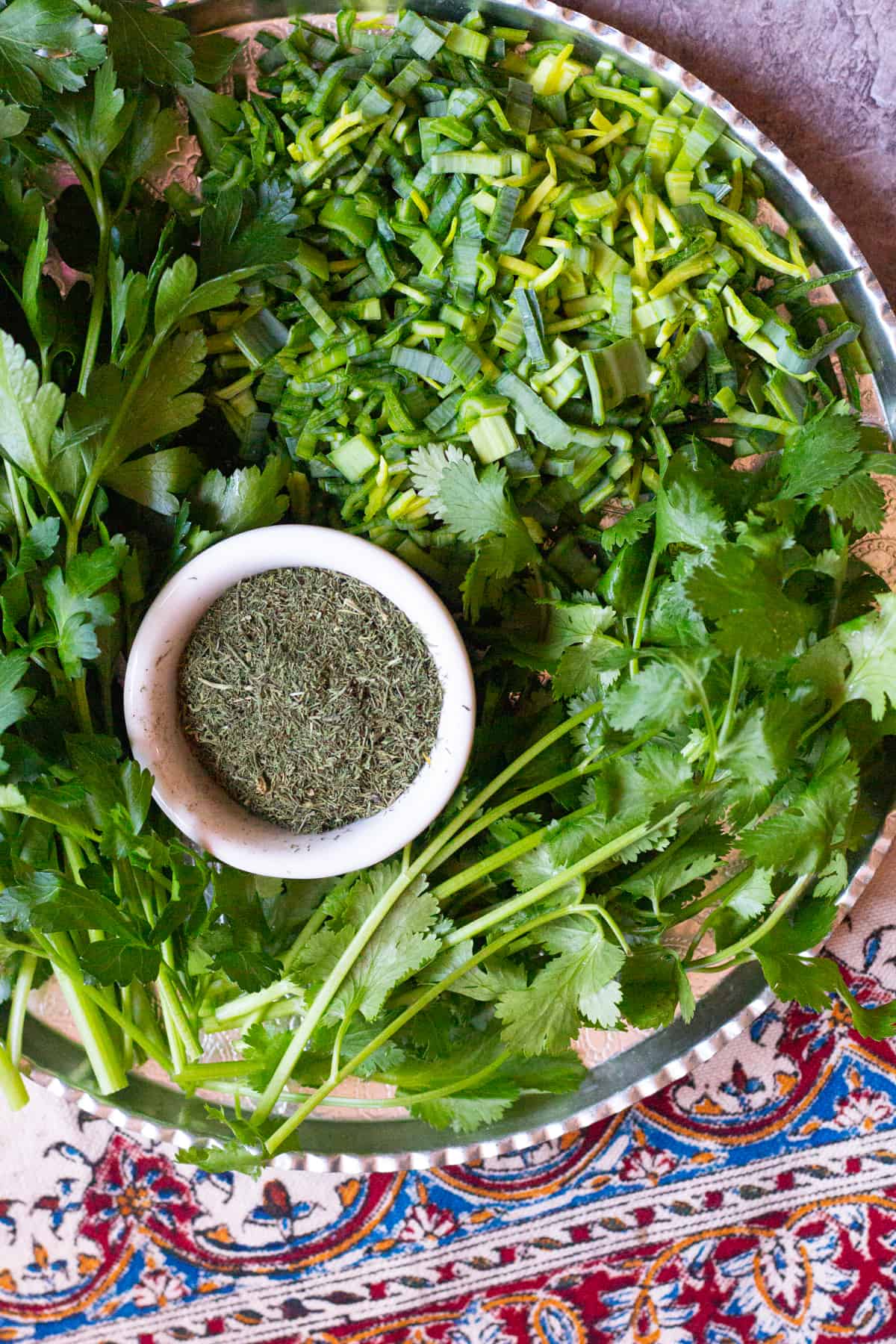
How to make Sabzi Polo
Start with rinsing the rice at least three times, and mix chopped parsley, cilantro, dill and chives/leek together in a bowl. Bring a large pot of water to boil and cook the rice in boiling water until it’s par cooked, meaning that the rice grain would be soft on the outside and firm in the middle. Drain the rice using a colander and place the pot back on the heat, make sure the pot is fully dry. Mix the rice with the herbs in the colander (see the photo below)
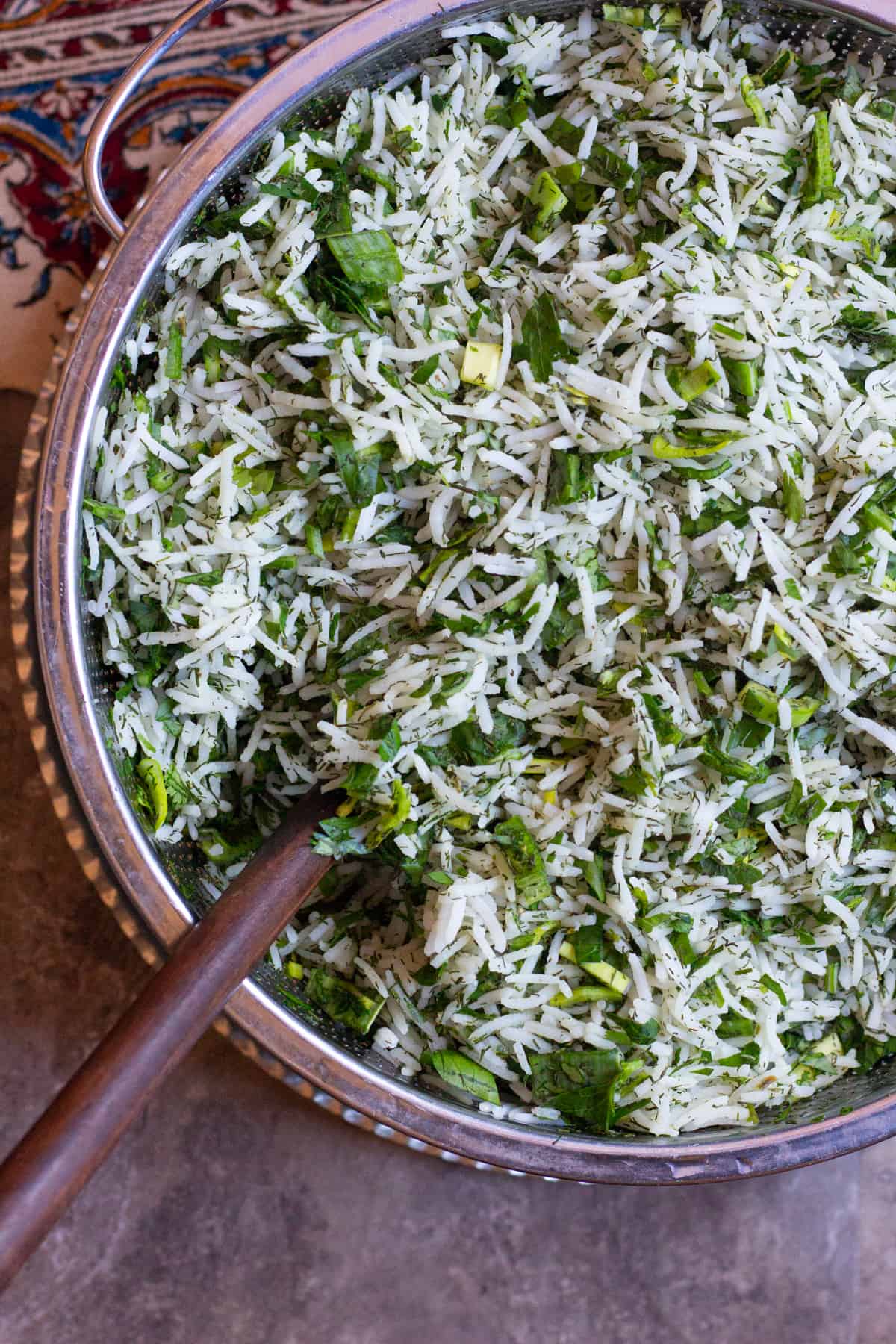
Pour some oil into the pot so it covers the bottom of the pot. Place lettuce leaves and cover the bottom of the pot completely. Scoop in the rice and herbs, shape it into a mound and using the end of a spatula, make five holes in the rice to let the steam out.
Pour some water around the edges, cover the lid in a clean towel and place it on the pot. Cook for 15 minutes on medium high so the rice starts to steam, then pour some oil on the rice, cover, and cook on low for another 30 minutes. Serve warm and don’t forget the lettuce tahdig at the bottom!
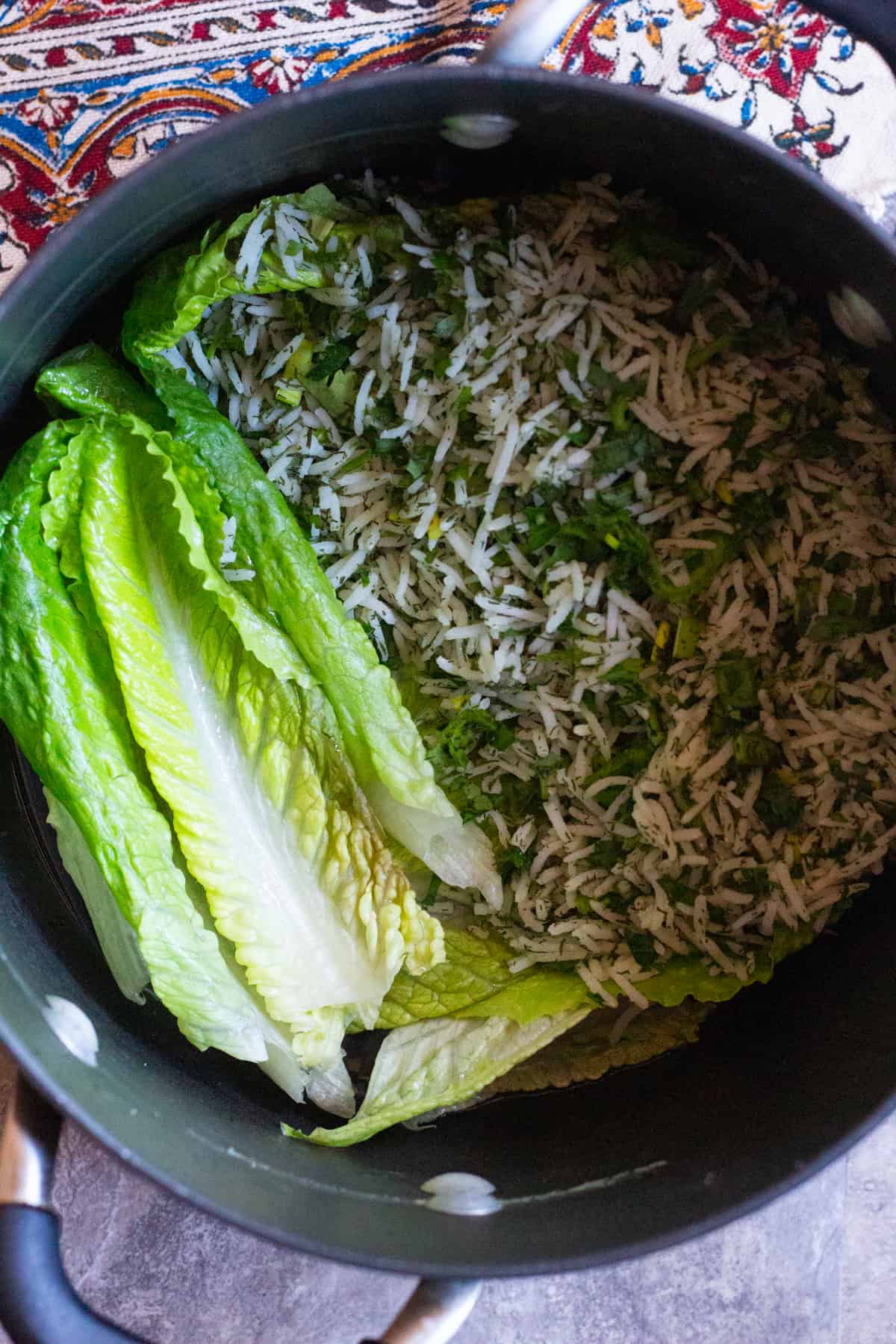
How to make Sabzi Polo with dried herbs
It’s pretty easy to make Persian herb rice with dried herbs. You’ll need 1/4 cup dried parsley, dried cilantro, dried chives and 1/2 cup dried dill or one cup of a pre-made sabzi polo herb mix. Mix the dried herbs together and once you drain the par boiled rice using a colander, mix it with dried herbs and proceed with the original recipe. There is no need to soak the herbs in water as they will blend with rice properly because of the steaming process.
I love making sabzi polo with both dried or fresh herbs but I have to admit that using dried herbs is much easier as there is no washing and chopping involved. The flavors are the same and both will yield into delicious green rice dishes. You can get sabzi polo dried herbs from Amazon (Affiliate Link).
Is there a simpler way to make Sabzi Polo?
Yes! If par cooking is not the approach you would like to take, you can put two cups of basmati rice in a pot, cover with water so it comes 2 inches above the rice and add two tablespoons of vegetable oil and a teaspoon of salt to it. Bring the pot to a boil and once half of the water is evaporated, mix in the fresh chopped herbs and two tablespoons of oil into the rice and wrap the lid in a kitchen towel. Cover the pot, lower the heat and cook for fifteen to twenty minutes and that’s it! This approach doesn’t include the lettuce tahdig but will still have the crispy rice at the bottom of the pot.
If using dried herb mix, mix it with rice in the beginning, cover with water, add oil and salt, and cook until the water is almost evaporated, cover with the lid wrapped in a kitchen towel and cook for 10-15 more minutes.
Notes and Tips to make Sabzi Polo
- If you’re making sabzi polo with fresh herbs, make sure to chop them as small as possible, this will help the rice to get more flavor and color.
- If using dried sabzi polo herb mix, store the leftovers in a glass jar or an airtight container and keep in a cool, dry place.
- You can serve sabzi polo with different types of meat. The most common is to serve it with fish for the Persian New Year.
- Non stick pots work best for making tahdig. Make sure there is enough oil at the bottom of the pot and cover it completely with lettuce leaves.
- To start steaming the rice, make sure to have the heat on medium high for the first ten to fifteen minutes and then turn the heat to low.


Sabzi Polo (Persian Herb Rice)
Ingredients
- 2 cups Basmati Rice
- 1 1/2 cup Fresh Dill, Chopped (See Note #1)
- 1/2 cup Fresh Chives, Chopped (See Note #2)
- 1/2 cup Fresh Cilantro, Chopped
- 1/2 cup Fresh Parsley, Chopped
- 1/8 cup Vegetable Oil, Plus 4 tablespoons
- 5-6 Romaine Lettuce Leaves
Instructions
- Rinse Basmati rice at least three times. Set aside.
- Mix all the chopped herbs in a large bowl and set aside.
- Fill a large non stick pot with water, place over high heat, cover with a lid and bring water to boil.
- Once the water is boiling, pour the rinsed rice into the water and cook it for 7-8 minutes until the rice grain is soft on the outside but still firm on the inside.
- Drain using a colander and mix the herbs with the rice.
- Place the pot back on medium heat and make sure it’s dry. Pour the vegetable oil into the pot and heat it.
- Once the oil is shimmery, place the lettuce leaves at the bottom of the pot to cover it.
- Scoop the rice and herbs back into the pot. Bring most of the rice to the middle, shaping it into a mound. Using the edge of a spatula, make 5 holes in the surface of the rice to let the steam out.
- Pour ½ cup of water around the edges. Wrap the lid in a clean towel and put it on the pot. Place on medium heat and let the rice steam for 15 minutes, until the steam comes out from the bottom of the pot.
- Pour 4 tablespoons vegetable oil on the rice, cover, and steam for 20-30 more minutes on medium low heat.
- Serve warm with chicken or fish.
Video
Notes
- If fresh dill is not available, use 1/2 cup dried dill.
- You can use leek (the green parts) instead of chives.
Nutrition
Nutrition information is automatically calculated, so should only be used as an approximation.
Have you made this recipe? Let us know by commenting and rating on this recipe. Take a picture and tag @unicornsinthekitchen and #unicornsinthekitchen for a chance to be featured!

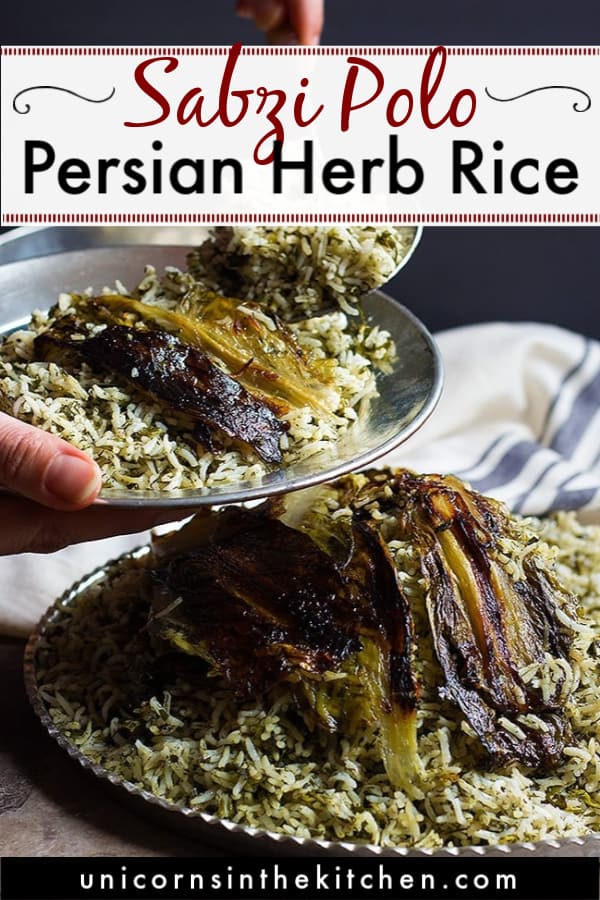










This looks so delicious! I can’t wait to try it!
I loved all the different herbs in this dish. They complemented eachother perfectly.
Definitely a delicious side for salmon. I’ll be trying it with chicken next week!
What a delicious side dish!